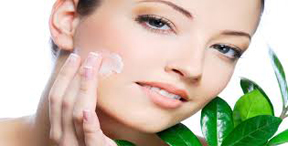 WASHINGTON: Some people slather and even inject creams containing mercury onto or under their skin to lighten it, putting themselves and others at risk for serious health problems, scientists say.
WASHINGTON: Some people slather and even inject creams containing mercury onto or under their skin to lighten it, putting themselves and others at risk for serious health problems, scientists say.
Researchers say they can now identify these creams and intervene much faster than before.
“In the US, the limit on mercury in products is 1 part per million,” said Gordon Vrdoljak, of the California Department of Public Health (CDPH).
“In some of these creams, we’ve been finding levels as high as 210,000 parts per million – really substantial amounts of mercury. If people are using the product quite regularly, their hands will exude it, it will get in their food, on their counter-tops, on the sheets their kids sleep on,” said Vrdoljak.
Identifying the toxic products has been a slow process, however. So, Vrdoljak turned to an instrument that uses a technique called total reflection x-ray fluorescence.
He found that the machine can screen product samples for mercury content far more efficiently, and just as accurately, as its well-established but time-consuming counterpart.
That means the team can identify the sources of mercury poisoning and help those affected much faster than before.
“Testing one product using the old technique could take days,” Vrdoljak said.
“Using the new instrument, I can run through 20 or 30 samples in a day quite easily. By identifying those products that contain mercury, we can direct people to remove them and clean up their households,” he said.
Although the metal does lighten skin, dark spots and even acne, research has shown that the silvery liquid can cause a number of health problems, including lower cognitive functioning, kidney damage, headaches, fatigue, hand tremors, depression and other symptoms.
As a result, the US and many other countries have set low limits on or have banned mercury in consumer products.
But demand is high among certain populations for these skin-lightening products, researchers said.
The work has led to two product recalls earlier this year, but often, they find the cosmetics are homemade and come in unmarked containers, researchers said.
The research was presented at the National Meeting & Exposition of the American Chemical Society (ACS) in San Francisco. -PTI






